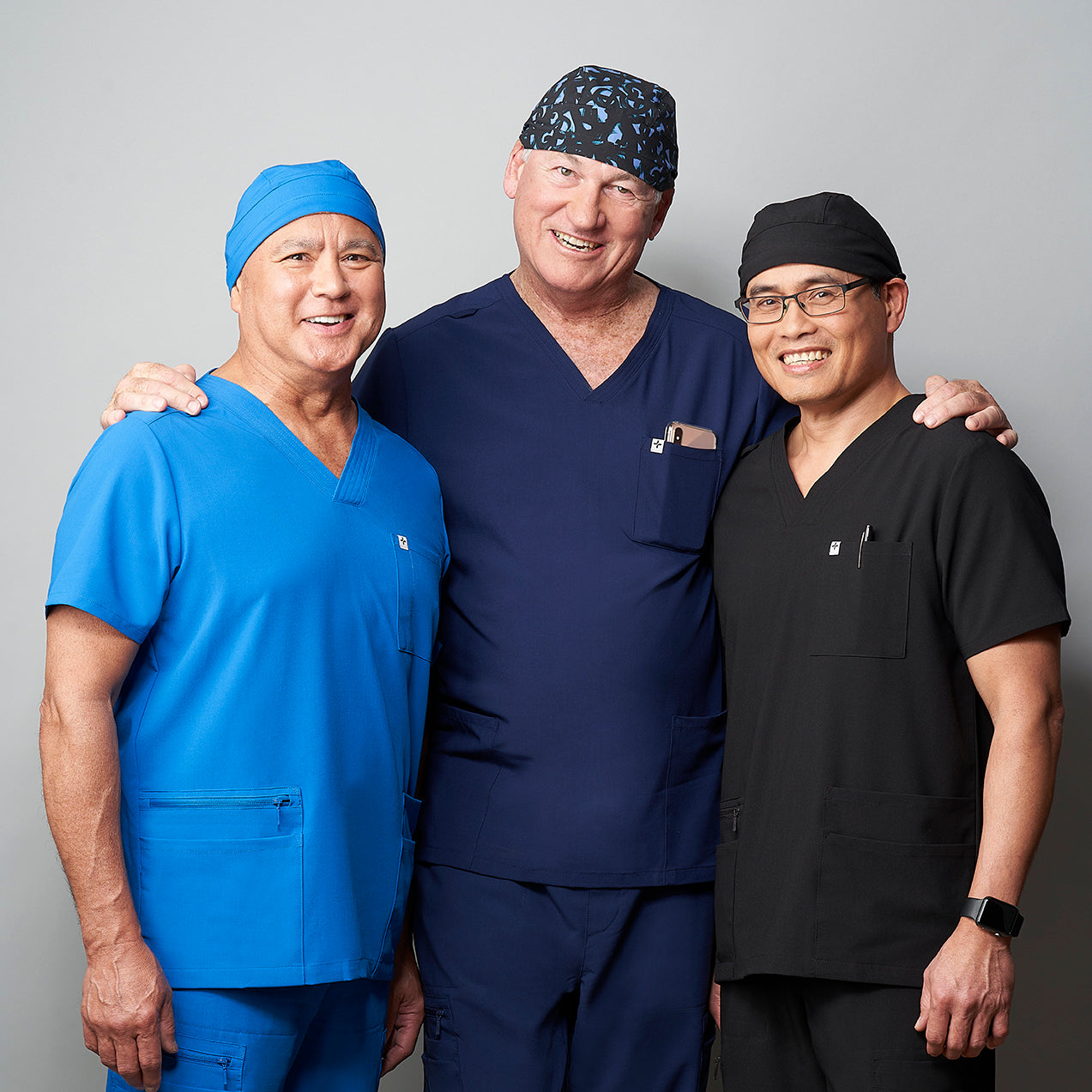In celebration of National Hemophilia Day, today, April 17th, we wanted to share more information about Hemophilia: the symptoms, treatment options and different types of Hemophilia. Also, we want to introduce you to the National Hemophilia Foundation, including the various events, educational programs, initiatives, mission and community resources that it provides to increase support and awareness for those living with Hemophilia. We at Care+Wear hope that we can help spread increasing awareness for an inherited bleeding disorder and highlight the great work that the National Hemophilia Foundation is doing both in New York and around the country.
First, what is hemophilia?
Hemophilia is a rare genetic bleeding disorder where blood cannot clot normally after a wound or injury. It occurs due to certain blood clotting factor absences or malfunctions. The primary symptom of this disorder is uncontrolled bleeding, which often involves spontaneous bleeding in different areas of the body, especially in muscles and joints. If left untreated, it can cause permanent damage. People with hemophilia do not bleed more than those without hemophilia rather they bleed longer because their body has trouble clotting and stopping the bleeding.
Although hemophilia is usually diagnosed at birth, the disorder can also be acquired later in life if the body begins to produce antibodies that attack and destroy clotting factors.
For some demographic information, the National Hemophilia Foundation’s website notes that there about 20,000 Americans living with Hemophilia. Moreover, the worldwide incidence of Hemophilia is estimated at more than 400,000 people. In fact, approximately 75% of people with Hemophilia around the world are still receiving inadequate treatment or have no access to treatment.
What are different types of hemophilia?
There are two types of inherited Hemophilia: Type A and Type B.
Type A, sometimes referred to as classical hemophilia according to the National Organization for Rare Disorders, is the most common type of hemophilia and is caused by the deficiency of the clotting factor VIII: one of the proteins that helps blood to form clots. It occurs in 1 out of every 5,000 male births and is about four times more common than the second type of inherited Hemophilia, Type B. It is only fully expressed in males although if a woman carries the gene she can have mild or very rarely severe symptoms.
Type B Hemophilia is caused by the deficiency of the blood clotting protein factor IX and is sometimes referred to as the Christmas disease according to the National Organization for Rare Disorders because it was first diagnosed in 1952 in a patient named Stephen Christmas. Without enough protein factor IX, the blood cannot clot properly to control bleeding.
Both types of hemophilia are most commonly found in males because both factor VIII and factor IX genes are found in the X chromosomes and females have two X chromosomes therefore they must have two altered copies of genes to have hemophilia whereas men only have one X chromosome and only need one altered gene.
What are some symptoms of hemophilia?
Two major symptoms of hemophilia are prolonged external bleeding and bruising that occurs easily for no apparent reason. The symptoms of hemophilia vary depending on the level of severity: mild, moderate, or severe. For instance, for those with severe hemophilia, bleeding occurs more frequently and sometimes without any provocation. On the other hand, people with more mild forms of hemophilia may have unusual bleeding only after a major injury or surgery. However, in general, people with hemophilia mostly have internal bleeding in their muscles and joints in areas such as “elbows, knees, hips, shoulders and ankles.” Over time, these areas may become hot, swollen, and painful to move. They can also experience bleeding of the mouth, gums, bleeding after circumcision, after shots, and frequent or hard to stop nosebleeds. In the worst-case scenario, recurrent bleeding may cause permanent joint damages such as joint deformity and reduced mobility.
In severe forms of hemophilia there can be bleeding in the brain. According to the our friends at the Cleveland Clinic, symptoms of bleeding in the brain may include “changes in behavior, excessive sleepiness, persistent headaches and neck pain, double vision, vomiting and seizures.”
How do we treat hemophilia?
According to the National Hemophilia Foundation, hemophilia can be treated with either therapy or through recombinant biotechnology.
Replacement therapy focuses on providing recombinant forms of the clotting factors VIII or IX to replace the blood clotting factors that are missing or deficient. During replacement therapy, the clotting factors are injected into a patient’s vein after being carefully screened to reduce the risk of transmitting infectious diseases, such as hepatitis and HIV.
Recombinant clotting factors, which are genetically engineered DNA and not from human blood, are also used commonly today. These therapies are for individuals with severe forms of hemophilia.
Usually, people with mild hemophilia do not require replacement therapy and they can instead be treated with injections of desmopressin, known as DDAVP, a “synthetic hormone that helps to stimulate the release of factor VIII” according to the National Hemophilia Association. However, it is important to note that DDAVP is not effective for people with type B hemophilia or the severe form of type A hemophilia.
Although there is no direct cure for hemophilia, improvements in donor screening and current viral inactivation has made clotting factor products very safe. The Center for Disease Control and Prevention does recommend going to a comprehensive hemophilia treatment center (HTC) which provides care to address all issues related to the disorder, as well as education.
More Information on the National Hemophilia Foundation
Founded in 1948, the National Hemophilia Foundation is “dedicated to finding better treatments and cures for inheritable bleeding disorders and preventing the complications of these disorders through education, advocacy and research”. It has over 51 chapters throughout United States including New York, California, Florida, Michigan, Ohio and much more.
Since 1972, the NHF has been awarding grants and fellowships to support innovative scientific research in order to find better treatments and cures for bleeding disorders. With the aims goal of advancing medical knowledge, this research has led to providing insights into improved factor replacement therapies, more accurate hemophilia diagnostic methods and “advanced standards of clinical care and treatment recommendations for all bleeding disorders”(NHF).
In addition, the NHF also conducts various public policy initiatives such as working for improved access to high-quality medical care, a safe blood supply, safe and effective treatments and an adequate reimbursement at the public and private levels. For instance, ‘Washington Days’, NHF's annual national advocacy conference, brings together people from across the country to make their voices heard and influence the legislative process.
Moreover, it has enacted the ‘ACT (Access to Care Today) Initiative’ in order to meet the imperative need to provide greater care for people with bleeding disorders. For instance, providing information on getting access to Hemophilia Treatment Centers (HTC’s), products and reimbursement for various therapies.
In addition, it also has a platform called the ‘Ethics Working Group’ with the purpose to encourage ethical behavior and promoting awareness of ethical issues. For instance, the NHF assists in resolving questionable ethical situations by identifying trends and patterns for a potential breach in ethical behavior.
Educational Programs and Initiatives
In addition to public policy efforts, the NHF also provides various educational programs and initiatives. In fact, the NHF's broad range of programs and services include ‘Steps for Living Program’ which is an online educational curriculum to assist families and patients affected by bleeding disorders throughout different life stages. For instance, its’ categories range from families with children ages 9-15 to adults 26 and older.
Moreover, it also provides ‘Victory for Women’, a national public awareness campaign to educate women and healthcare providers about bleeding disorders.
If you are looking to get involved with this foundation, you can become a part of a NHF”s ‘National Hemophilia Walk program’ or donate a car or vehicle through NHF’s ‘Vehicle donation program’.
Recently, Care+Wear was invited by NHF’s New York Chapter to join its Triveoke. At the event, we were able to meet hemophilia patients in the area and their support groups of friends and families. We also had the opportunity to share our PICC Line Cover and provide a sneak peek to several of our upcoming products! We loved hearing their feedback and needs, along with their Karaoke and Trivia skills! We are looking forward to a strong and enduring relationship with the National Hemophilia Foundation!











Leave a comment (all fields required)